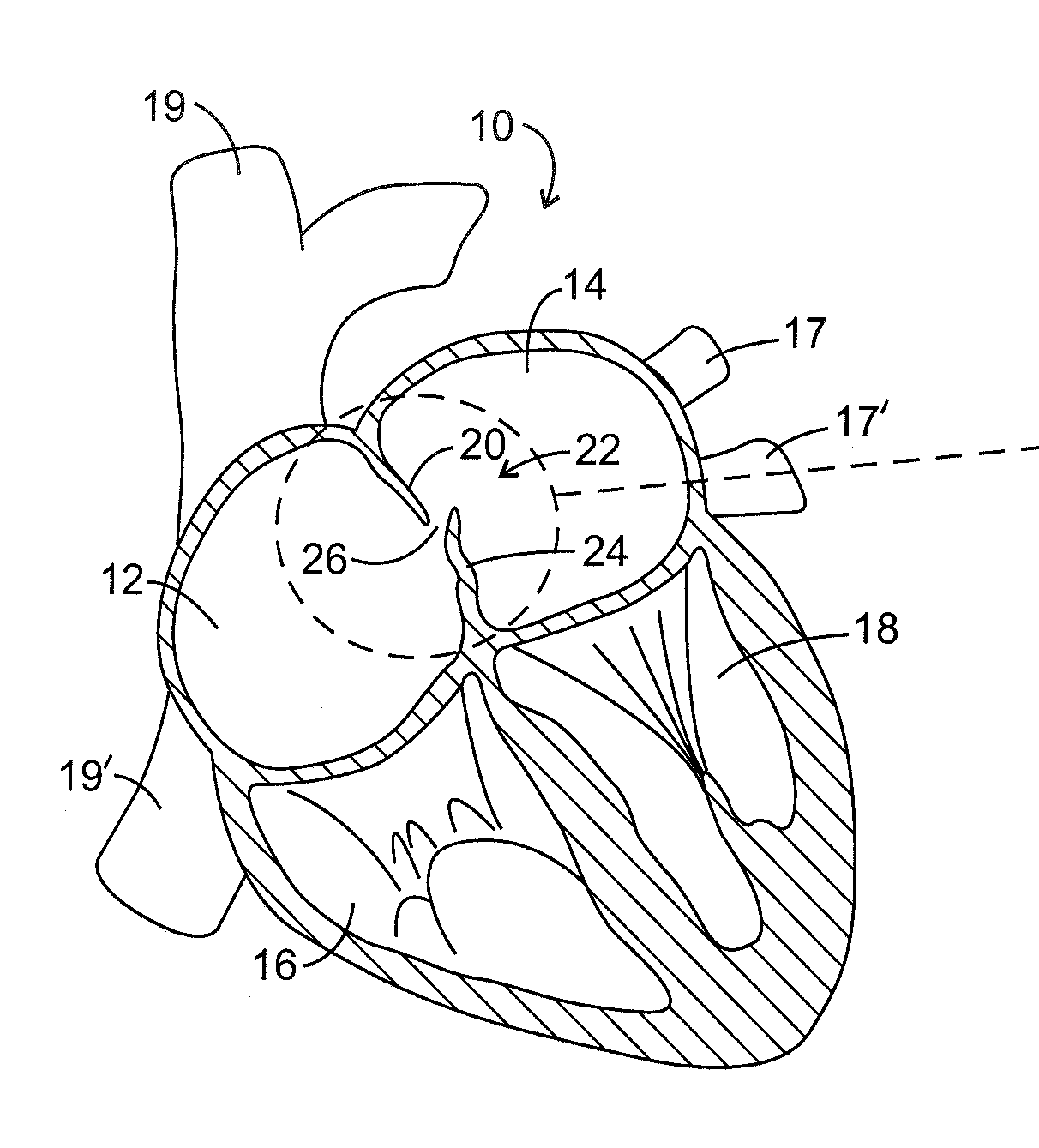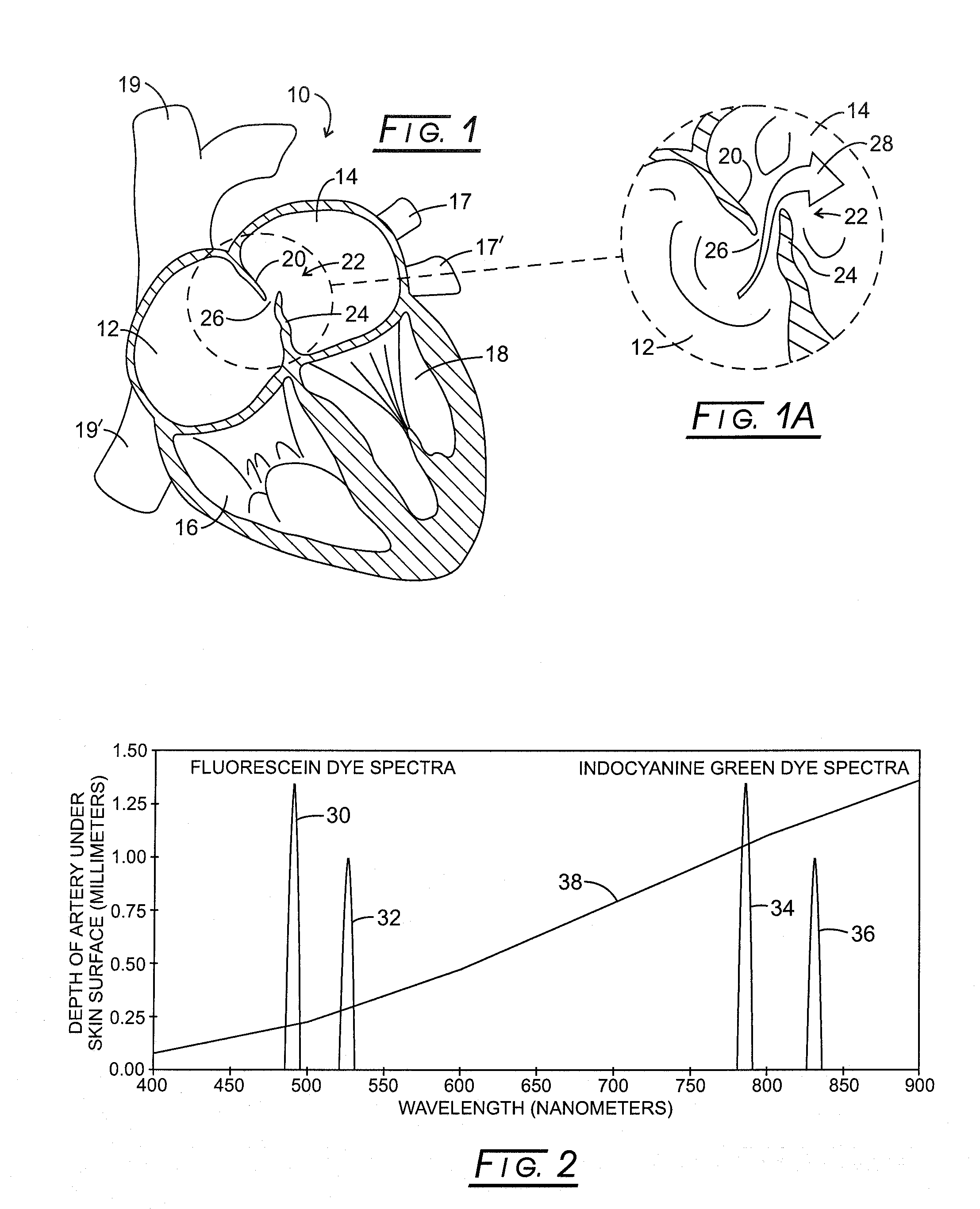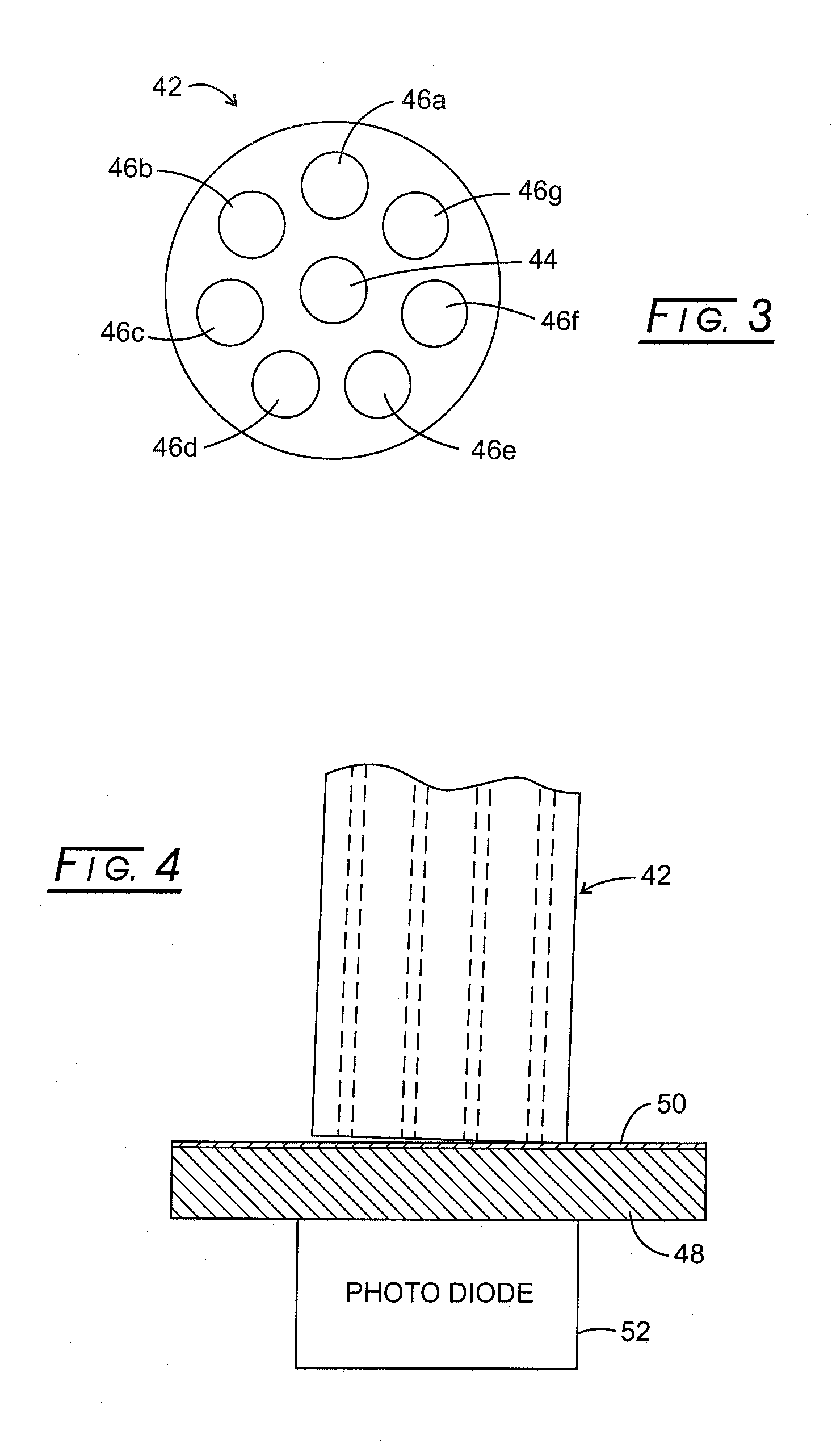Hemodynamic Detection of Circulatory Anomalies
a technology of hemodynamic detection and anomalies, applied in the field of system, method and apparatus for detection of circulatory anomalies, can solve the problems of not being able to detect the presence of pfo in the brain, unable to meet the needs of widespread screening, and not being able to achieve the effect of widespread screening
- Summary
- Abstract
- Description
- Claims
- Application Information
AI Technical Summary
Benefits of technology
Problems solved by technology
Method used
Image
Examples
example 1
Calculation of Flow Rate of Human Subject with Single Right-to-Left Shunt
[0219]This example involves the calculation of the flow rate or Shunt Conductance of a human subject with a single right-to-left shunt, as seen in FIG. 9 using Eq. 24 and assuming the following parameters:
Assume:
[0220]SI=Stroke Index for Normal Subject=46 ml / m2 [0221]H=Height of subject=70 inches[0222]W=Weight of subject=160 pounds[0223]HR=measured average heart rate during period of measurement of indicator concentration as a function of time=1.0 beats / second (i.e., 60 beats / minute)[0224]A1=calculated area under indicator / dilution curve derived from measured fluorescence signal level (in units of millivolts) vs. time (in seconds) associated with right-to-left shunt=40.5 millivolts-seconds[0225]A2=calculated area under indicator / dilution curve derived from measured fluorescence signal level (in units of millivolts) vs. time (in seconds) associated with blood flow through lungs and back to left atrium of heart=3...
example 2
Calculation of Flow Rate of Human Subject with Two Right-to-Left Shunts
[0226]This example involves the calculation of the flow rate or Shunt Conductance of a human subject with two right-to-left shunts, as seen in FIG. 11, using Eq. 25 and 26 assuming the following parameters:
Assume:
[0227]SI=Stroke Index for Normal Subject=46 ml / m2 [0228]H=Height of subject=72 inches[0229]W=Weight of subject=185 pounds[0230]HR=measured average heart rate during period of measurement of indicator concentration as a function of time=1.2 beats / second (i.e., 60 beats / minute)[0231]A1=calculated area under indicator / dilution curve derived from measured fluorescence signal level (in units of millivolts) vs. time (in seconds) associated with a first right-to-left shunt=45.0 millivolts-seconds[0232]A2=calculated area under indicator / dilution curve derived from measured fluorescence signal level (in units of millivolts) vs. time (in seconds) associated with right-to-left shunt=65.7 millivolts-seconds[0233]A3=...
example 3
System and Method for Testing Circulatory Tracking Indicators and Detectors
[0274]The present disclosure is also embodied in a method for testing systems for monitoring cardiac output, circulatory behavior of blood fluids, and blood circulation, including circulation within peripheral tissues of a human body and organs, such as the heart, brain or liver. In particular, a method for utilizing an experimental animal body for determining the efficacy of circulatory tracking systems by emplacing an injection catheter into the circulatory system or a chamber of the heart in a test animal with a functioning circulatory system and heart. Once the injection catheter is emplaced, a number of variables in a circulatory tracking system to be tested may be altered. For instance, a series of circulatory tracking reagents being tested with the method may be injected in the circulatory system of the test animal, and detector systems compatible with the circulatory tracking reagent can be activated ...
PUM
 Login to View More
Login to View More Abstract
Description
Claims
Application Information
 Login to View More
Login to View More - R&D
- Intellectual Property
- Life Sciences
- Materials
- Tech Scout
- Unparalleled Data Quality
- Higher Quality Content
- 60% Fewer Hallucinations
Browse by: Latest US Patents, China's latest patents, Technical Efficacy Thesaurus, Application Domain, Technology Topic, Popular Technical Reports.
© 2025 PatSnap. All rights reserved.Legal|Privacy policy|Modern Slavery Act Transparency Statement|Sitemap|About US| Contact US: help@patsnap.com



